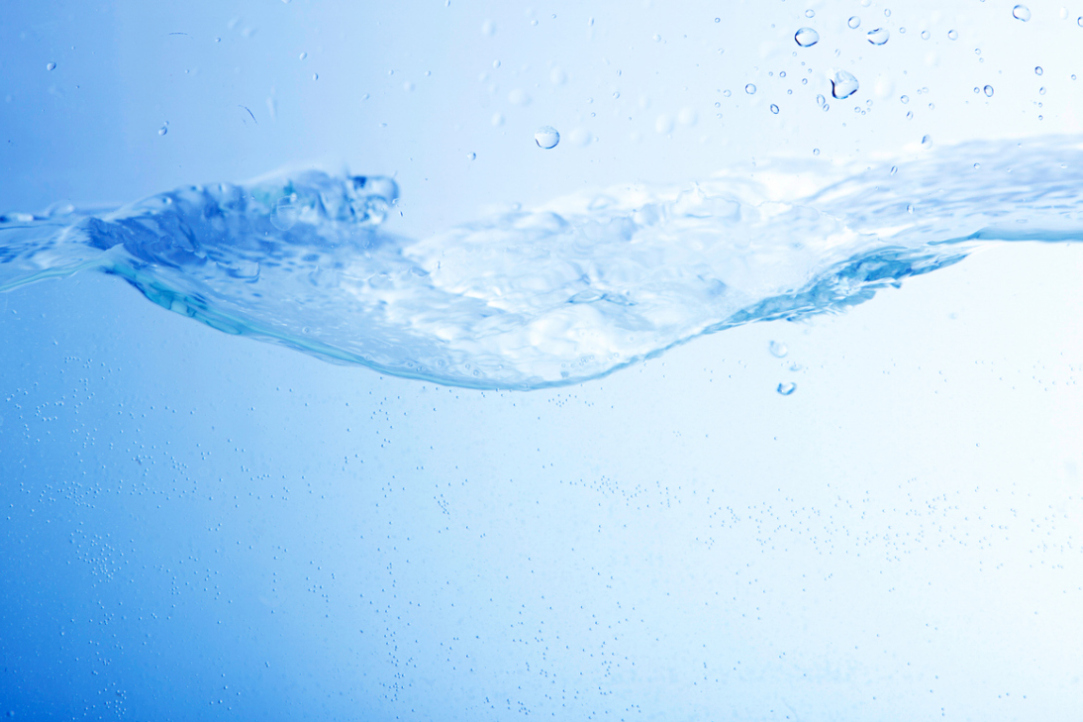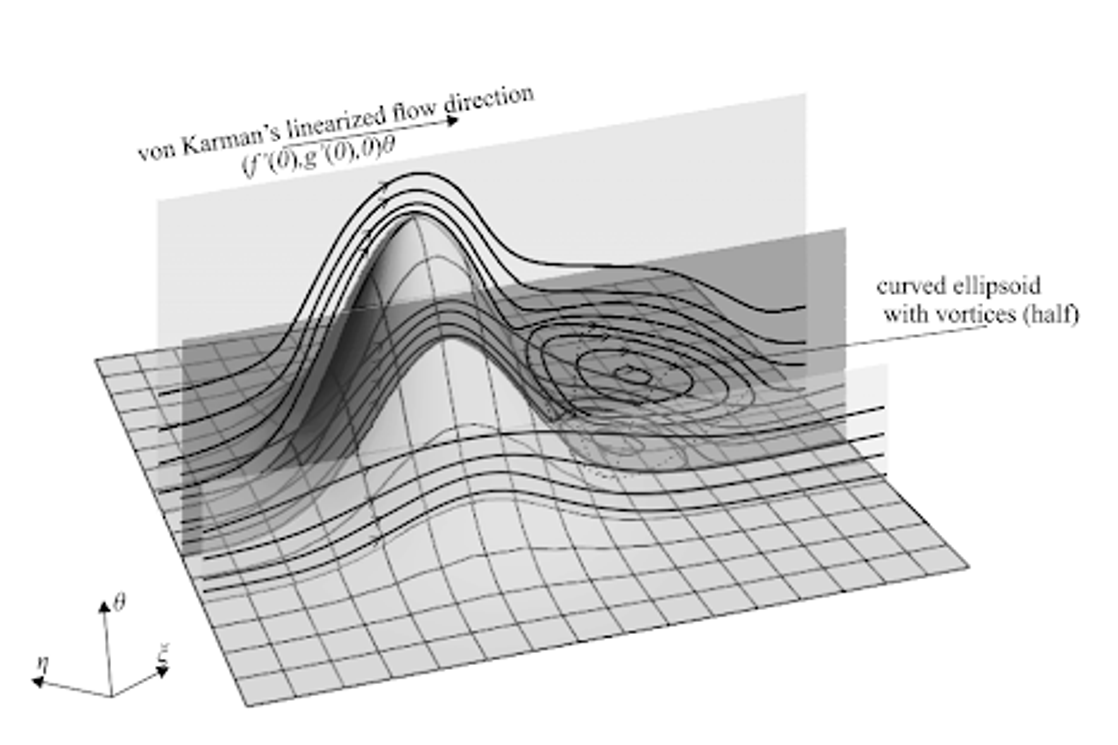HSE Scientist Optimises Solution of Hydrodynamics Problems

Supercomputers are no longer required to calculate fluid flows in multiscale problems.
Roman Gaydukov, Associate Professor at the MIEM HSE School of Applied Mathematics, has modelled the fluid flow around a rotating disk with small surface irregularities. His solution allows for predicting fluid flow behaviour without the need for powerful supercomputers. The results have been published in Russian Journal of Mathematical Physics.
Hydrodynamics studies the motion of fluids and their interaction with solid surfaces. This branch of physics makes it possible to understand and predict the behaviour of fluids and gases under various conditions. In particular, the principles of hydrodynamics are used in electrochemistry for calculating the reactions of galvanisation, such as silver molecules adhering to a metal surface, and oxidation, such as patina formation on copper.
These processes use a disk electrode, which is a flat metal plate that rotates in a fluid. To accurately calculate electrochemical reactions, it is essential to understand how the fluid moves around the electrode and what conditions that need to be maintained. To achieve this, scientists must account for numerous variables, while even minor irregularities on the disk surface can greatly influence fluid flow, leading to complex and unexpected effects.

Earlier studies focused solely on symmetrical irregularities, but a scientist at HSE University examined a more complex case. Roman Gaydukov calculated how fluid flow would change with the presence of asymmetrical irregularities on the rotating disk surface.
To do this, he used the method of multideck structures of boundary layers, making it possible to decompose the three-dimensional problem into a series of two-dimensional ones. This method helps solve complex hydrodynamic problems at high Reynolds numbers, where direct modelling is impossible. Although this method has been known since the late 1960s, a rigorous mathematical formulation was only recently developed by the author of the paper together with Professor Vladimir Danilov. The mathematical algorithm of the method can be integrated into any symbolic computation software.

Roman Gaydukov
'Under real conditions, perfectly smooth surfaces do not exist. We have demonstrated how small irregularities on the disk surface affect fluid flow by creating vortex zones and altering the structure of the boundary layer,' explains Roman Gaydukov. 'Our method allows modelling a problem within a few hours, whereas it could take days or even weeks on a supercomputer. This not only saves time but also reduces the cost of computational resources. The method works effectively for large but finite Reynolds numbers.'
The Reynolds number is a dimensionless quantity that describes the relationship between inertial and viscous forces in fluid flow. A large Reynolds number signifies the dominance of inertial forces, which often results in turbulent (chaotic) flows, while a small Reynolds number indicates the dominance of viscous forces, leading to laminar (ordered) flows.
The developed approach can be used to accurately model fluid motion during chemical reactions, with potentially wide applications in industry.
In the future, the scientist plans to extend his research to more complex systems involving interactions between different phases, such as liquid droplets in an air stream or aerosols. This will enable a deeper understanding of the processes in multicomponent and multiphase systems and help improve existing models.
According to Gaydukov, 'Together with my graduate student Nikita Burov, we plan to investigate how the shape of fluid droplets changes as they move through an air flow and how the droplets, as irregularities—including their potential freezing—affect the flow.'
See also:
How Colour Affects Pricing: Why Art Collectors Pay More for Blue
Economists from HSE University, St Petersburg State University, and the University of Florida have found which colours in abstract paintings increase their market value. An analysis of thousands of canvases sold at auctions revealed that buyers place a higher value on blue and favour bright, saturated palettes, while showing less appreciation for traditional colour schemes. The article has been published in Information Systems Frontiers.
New Method for Describing Graphene Simplifies Analysis of Nanomaterials
An international team, including scientists from HSE University, has proposed a new mathematical method to analyse the structure of graphene. The scientists demonstrated that the characteristics of a graphene lattice can be represented using a three-step random walk model of a particle. This approach allows the lattice to be described more quickly and without cumbersome calculations. The study has been published in Journal of Physics A: Mathematical and Theoretical.
Scientists Have Modelled Supercapacitor Operation at Molecular and Ionic Level
HSE scientists used supercomputer simulations to study the behaviour of ions and water molecules inside the nanopores of a supercapacitor. The results showed that even a very small amount of water alters the charge distribution inside the nanopores and influences the device’s energy storage capacity. This approach makes it possible to predict how supercapacitors behave under different electrolyte compositions and humidity conditions. The paper has been published in Electrochimica Acta. The study was supported by a grant from the Russian Science Foundation (RSF).
Designing an Accurate Reading Skills Test: Why Parallel Texts are Important in Dyslexia Diagnosis
Researchers from the HSE Centre for Language and Brain have developed a tool for accurately assessing reading skills in adults with reading impairments. It can be used, for instance, before and after sessions with a language therapist. The tool includes two texts that differ in content but are equal in complexity: participants were observed to read them at the same speed, make a similar number of errors, and understand the content to the same degree. Such parallel texts will enable more accurate diagnosis of dyslexia and better monitoring of the effectiveness of interventions aimed at addressing it. The paper has been published in Educational Studies.
Internal Clock: How Heart Rate and Emotions Shape Our Perception of Time
Our perception of time depends on heart rate—this is the conclusion reached by neuroscientists at HSE University. In their experiment, volunteers watched short videos designed to evoke specific emotions and estimated each video's duration, while researchers recorded their heart activity using ECG. The study found that the slower a participant's heart rate, the shorter they perceived the video to be—especially when watching unpleasant content. The study has been published in Frontiers in Psychology.
‘It Was Interesting to See How Our Chinese Colleagues Work’: HSE Researchers Take Part in Hefei Summer School
This summer, Diana Sukhoverkhova, Daria Mazur, and David Kagramanyan, research assistants at the MIEM HSE Laboratory for Computational Physics, spent five weeks in China. At the Future Scientist Exchange Program (FuSEP) summer school in Hefei, they worked in new fields of science together with their Chinese colleagues. HSE's promising scientists spoke to the HSE News Service about their intense and productive time in China.
Scientists Identify Personality Traits That Help Schoolchildren Succeed Academically
Economists from HSE University and the Southern Federal University have found that personality traits such as conscientiousness and open-mindedness help schoolchildren improve their academic performance. The study, conducted across seven countries, was the first large-scale international analysis of the impact of character traits on the academic achievement of 10 and 15-year-olds. The findings have been published in the International Journal of Educational Research.
HSE Scientists Reveal How Disrupted Brain Connectivity Affects Cognitive and Social Behaviour in Children with Autism
An international team of scientists, including researchers from the HSE Centre for Language and Brain, has for the first time studied the connectivity between the brain's sensorimotor and cognitive control networks in children with autism. Using fMRI data, the researchers found that connections within the cognitive control network (responsible for attention and inhibitory control) are weakened, while connections between this network and the sensorimotor network (responsible for movement and sensory processing) are, by contrast, excessively strong. These features manifest as difficulties in social interaction and behavioural regulation in children. The study has been published in Brain Imaging and Behavior.
Similar Comprehension, Different Reading: How Native Language Affects Reading in English as a Second Language
Researchers from the MECO international project, including experts from the HSE Centre for Language and Brain, have developed a tool for analysing data on English text reading by native speakers of more than 19 languages. In a large-scale experiment involving over 1,200 people, researchers recorded participants’ eye movements as they silently read the same English texts and then assessed their level of comprehension. The results showed that even when comprehension levels were the same, the reading process—such as gaze fixations, rereading, and word skipping—varied depending on the reader's native language and their English proficiency. The study has been published in Studies in Second Language Acquisition.
Mortgage and Demography: HSE Scientists Reveal How Mortgage Debt Shapes Family Priorities
Having a mortgage increases the likelihood that a Russian family will plan to have a child within the next three years by 39 percentage points. This is the conclusion of a study by Prof. Elena Vakulenko and doctoral student Rufina Evgrafova from the HSE Faculty of Economic Sciences. The authors emphasise that this effect is most pronounced among women, people under 36, and those without children. The study findings have been published in Voprosy Ekonomiki.


